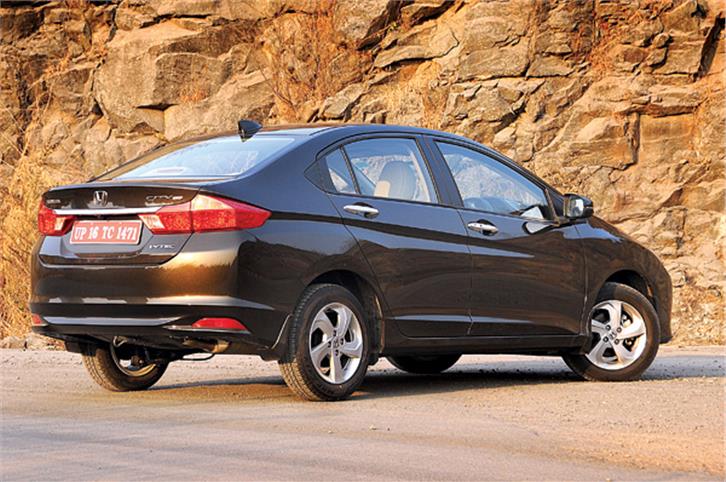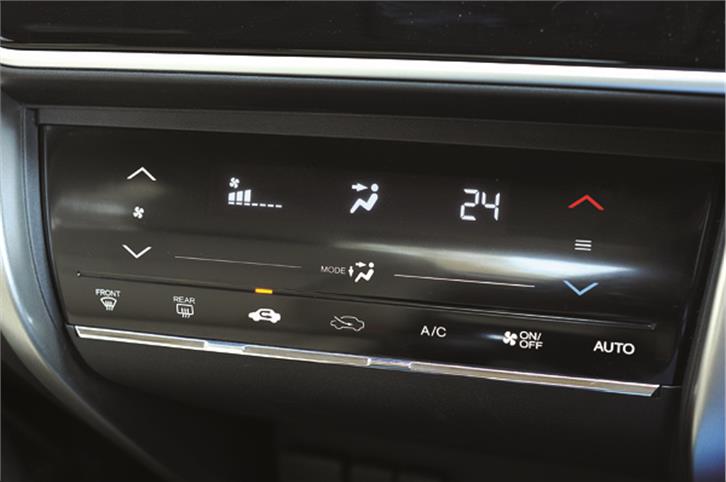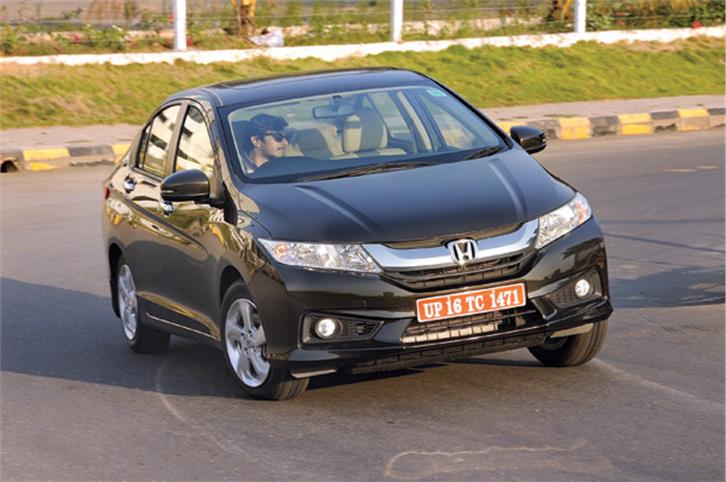How much of a leap forward has Honda taken with the all-new City? Here's our comprehensive road-test review.
Despite its familiar design, what you’ll immediately notice is that the new City is bigger than before. The wheelbase has increased by 50mm and the overall length has grown 25mm too. While the numbers may not look like much, the cleverly revised styling is what’s responsible for its perceived size and mature look.
The slightly garish chrome slab on the grille may not to be to everybody’s taste, but the sleekly cut and technical-looking twin headlamps look superb. The new City retains its predecessor’s ‘Arrow Shot’ silhouette, but the addition of a strong character line across the door adds dynamism to its profile. Elements such as this and the sharper creases on the bumper are all part of Honda’s new design language, christened ‘Exciting H’. The Civic-like tail-lamps are wide and extend into the boot lid. They help highlight the 1,695mm width of the car and look premium too. But, the skinny 175-section tyres and smallish wheels fail to do justice to an otherwise energetic shape.
For this all-new platform, Honda has managed to improve the torsional rigidity by a good 24 percent, while simultaneously reducing overall weight. To achieve this, they have used higher-tensile steel in the body and lightweight parts in the suspension assembly. Honda has also moved the fuel tank back to the conventional position under the rear seat to minimise fuel line plumbing, which saves weight as well as cost. Cumulatively, these steps have resulted in a good 45kg weight reduction, spec-for-spec, over its manual gearbox-equipped predecessor, while the CVT is an impressive 75kg lighter than previous automatic.
The new City uses conventional MacPherson struts up front and a twist beam axle at the rear. Instead of discs, the rear wheels still rely on drum brakes, albeit slightly larger ones. In its quest for fuel efficiency, Honda has stuck with narrow 175/65 R15 tyres, which may again disappoint enthusiasts.
However, the company has its priorities clear. Fuel efficiency takes precedence over all other driving attributes and it is for this reason that Honda has lowered friction with a manic focus, wherever possible. Lower-frictions hubs, brake pads that are further away from the discs and pistons with anti-friction coatings are some of the efforts. And, the added sixth cog on the diesel City plays a vital role in keeping the engine more relaxed at highway speeds, further reducing consumption. A ground clearance of 165mm may seem insufficient, especially since the earlier car had a reputation for scraping its belly over speed breakers, but Honda has shaped the underbody such that the typical contact areas have been recessed in.










Comments
Member Login
Personal Details
No comments yet. Be the first to comment.